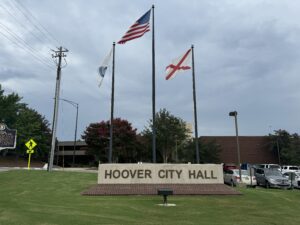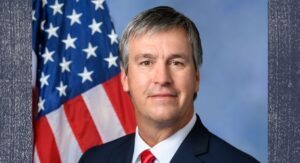Election reignites calls for change at Democratic Party
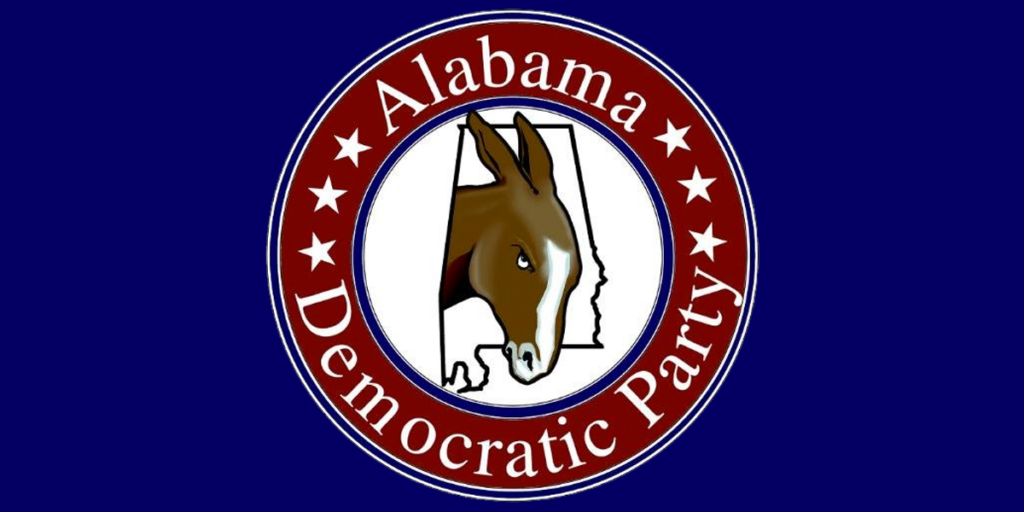
Alabama Democrats’ disappointing performance in Tuesday’s election has reignited calls for changes within the state party, with critics saying candidates were largely left to fend for themselves despite available party funds. Democratic candidates were generally held to about 40 percent of the vote in statewide races, crushing hopes that the party could build on last year’s election of U.S. Sen. Doug Jones, or at least demonstrate themselves as viable with competitive races. The losses rekindled long simmering tensions, with several 2018 candidates calling for new leadership or at least a new approach. “When you have a losing season and a losing season and a losing season, the coach goes,” said former Alabama Chief Justice Sue Bell Cobb, who ran in the Democratic gubernatorial primary. Cobb earlier this year called for the resignations of Alabama Democratic Party Chair Nancy Worley and Vice-Chairman Joe Reed. Mallory Hagan, a former news anchor and Miss America who ran in Alabama’s 3rd Congressional District, used her election night speech to say that Democrats upset over the loss should be “mad at our own” party. Chief Justice candidate Bob Vance stopped short of calling for a change in leadership but he said the party needs a “new approach” and said promises of help never substantially materialized. The Democratic Party, which has been silent for months at a time on social media, has been criticized for not being an active presence to promote the Democratic brand and candidates. The party had about $800,000 combined in its state and federal accounts that it did not exhaust on efforts to back candidates. “That’s the burr under my saddle that the party had the capability and chose not to do anything with it,” Vance said. Worley defended the party’s efforts and spending decisions. She said the party did have more money from qualifying fees this year, but had to hold money back for operating expenses, to pay debt and because of restrictions on how funds can be used. Worley estimated the party spent about $250,000 on efforts for candidates, including fliers that pictured all the statewide candidates, and five days of radio and TV ads urging people to vote Democratic. “Pointing the finger of blame at any single person after an election in just using the scapegoat method,” Worley said There are two separate petitions with the Democratic National Committee that were filed before Tuesday contesting Worley’s August election as chairwoman. One of the petitions alleges that “elections were conducted in a sloppy and haphazard manner” and “deliberately manipulated” in order to favor Worley and others. Worley said that they will file a response to those complaints. Democrats in Alabama had been obliterated from statewide office — until Jones’ election last year. Sheila Gilbert, chairwoman of the Alabama Democratic Reform Caucus, said while state candidates had a 20-point deficit there were some close legislative races that she believed could have benefited from state party help. Many veteran candidates had been modest in their expectations for Tuesday, not expecting a blue wave, but perhaps a blue ripple or at least slimmer margins in state races. “I’m not sure that we could have moved the needle much, even if we had brought all these forces to bear, but certainly the absence of a meaningful party, not just for this election cycle, but for years now, I think has contributed to these problems which really became evident this last Tuesday,” Vance said. Republished with permission from the Associated Press.
‘Red tsunami’ overwhelms Alabama Democrats on Election Day
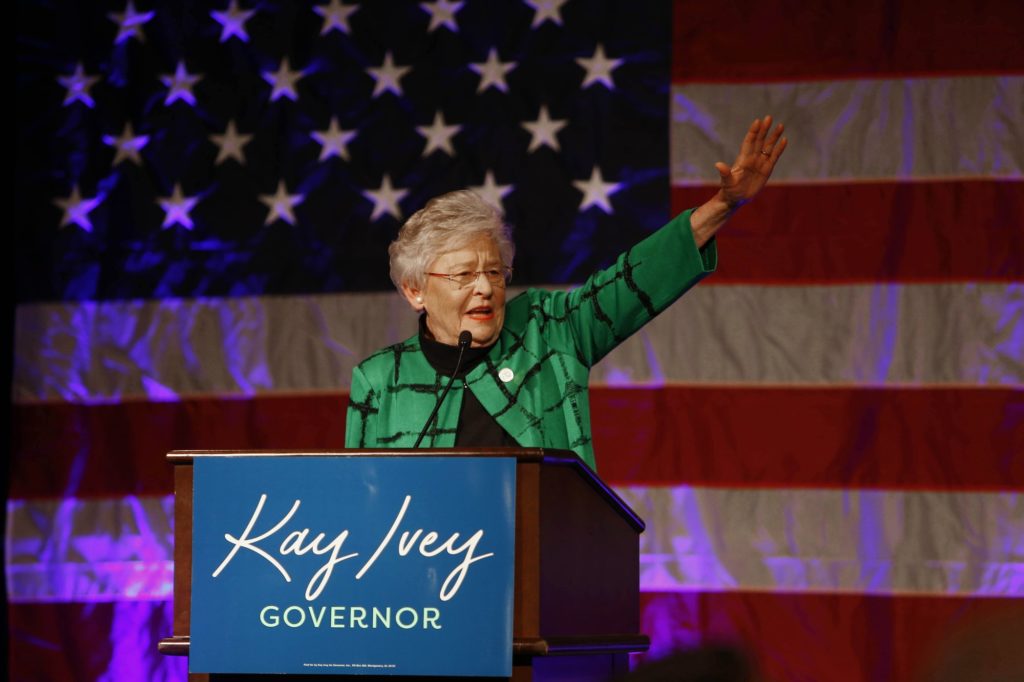
Alabama Republicans crushed Democratic hopes of building on U.S. Sen. Doug Jones’ victory last year, with GOP enthusiasm and support for President Donald Trump overwhelming the Democrats’ rekindled energy. Republicans swept all statewide and contested congressional races on Tuesday, maintaining Alabama’s status as exceedingly tough territory for Democrats. “No blue wave and no blue ripple,” said political scientist Jess Brown. Alabama Democrats entered 2018 with renewed enthusiasm after Jones upset Republican Roy Moore. The special election was something of an anomaly in that it pitted a well-funded Democrat against a polarizing Republican who became additionally wounded by sexual-misconduct claims. But it gave rise to the hope that a Democrat could win again statewide or at least create tight races. That did not materialize Tuesday. Brown said 37-42 percent had been the ceiling for most statewide Democratic candidates in recent years, and they didn’t break “out of that mold.” Unofficial returns show that most statewide Democratic candidates, including gubernatorial challenger Walt Maddox, were kept at around 40 percentage points. Republicans picked up six seats — previously held by Democrats or independents — in the Alabama Legislature, where they already held a lopsided majority. Republicans will hold 77 seats in the 105-member House and 27 in the 35-member Senate, according to unofficial returns. The Democratic losses leave just two white Democrats in the Legislature, one in each chamber. Alabama Republican Party Chairwoman Terry Lathan said a “red tsunami” swept over Alabama. Lathan said an already strong GOP base was energized by the national political landscape. “I do believe this state is so pro-Donald Trump and the conservative policies that he’s implemented, they heard him and they watched him. He was a machine the last month going all over the country. While he might not have been here, we heard his message,” Lathan said. According to AP VoteCast, a national survey of the electorate and nonvoters, a majority of Alabama voters thought the country was on the right track and had positive views of Trump and the national economy. Sixty-one percent of voters in Alabama had positive views of Trump; 61 percent said they approve of how he is handling his job. For 42 percent of Alabama voters, Trump was not a factor they considered while casting their votes. By comparison, 37 percent said a reason for their vote was to express support for Trump, and 21 percent said they voted to express opposition to Trump. Alabama House Minority Leader Anthony Daniels said Democrats need to have a conversation about party infrastructure and brand. “I think right now we just have to have a real heart-to-heart conversation about infrastructure,” Daniels said. Daniels said he believed proposed constitutional amendments to restrict abortion and allow public display of the Ten Commandments also drove Republican turnout on Tuesday. Some Alabama Democrats this summer unsuccessfully pushed for new party leadership, saying the state party wasn’t doing enough to help candidates. “In Alabama, it obviously didn’t turn out the way we had hoped,” Alabama Democratic Party Chairwoman Nancy Worley said. But Worley said the positives included a slate of first-time candidates who gained experience. “The hopeful sign here is we have people who are willing to run. They are talented. They have the right message for progress in our state,” Worley said. Republished with permission from the Associated Press.
With a withered state party, Alabama Democrats on their own
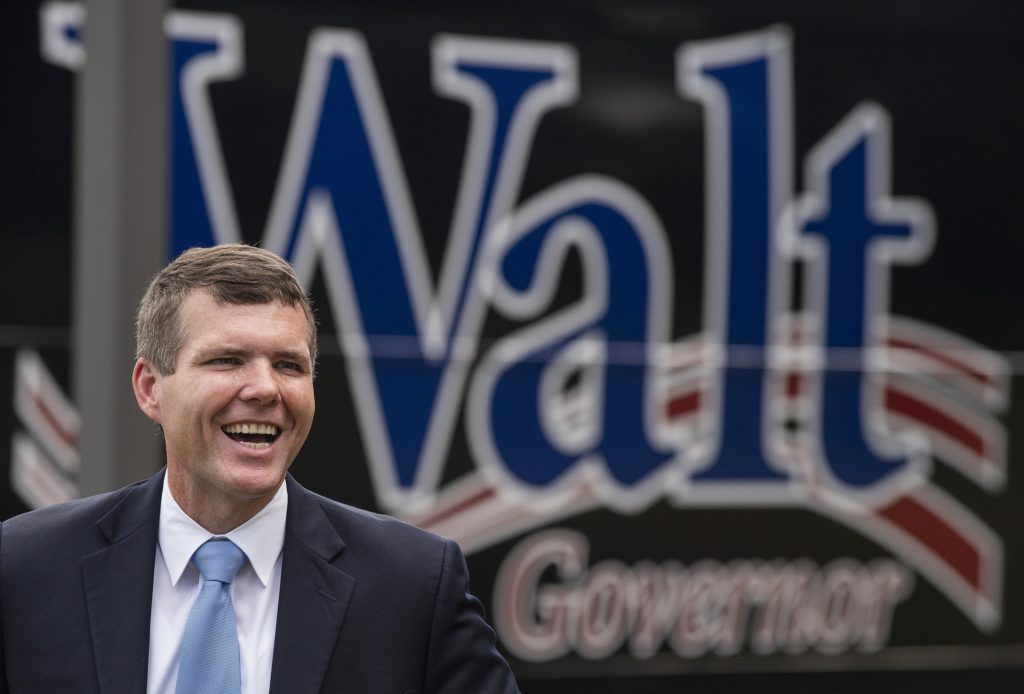
The election of Doug Jones to the U.S. Senate last year has given hope to Democrats in deep-red Alabama, a state where they haven’t had hope in a long time. But the party’s candidates have been largely on their own in trying to get their message out. Enfeebled by years of Republican dominance and plagued recently by infighting and debt, the Alabama Democratic Party doesn’t have the means to offer much help to what some members see as their best slate of candidates in years. ___ Editors: After decades of losing ground across most of the South, Democrats are finding unexpected energy in the region during the 2018 midterm elections. Even in states traditionally seen as deeply red, the party is finding hope for a resurgence – in local and state races as well as on a national stage. In this four-part series Southern Inroads, The Associated Press looks at a few key areas of Southern states where Democrats are focusing energy as Election Day approaches. ___ From the port city of Mobile to the northern hub of Alabama’s aerospace industry, Democratic candidates say Republicans have failed to address longstanding problems in education and health care. And at a recent gathering at a Democratic club in a leafy Birmingham suburb, residents joked that they didn’t even know there were other Democrats in their largely-red neighborhood until they met campaigning for Jones. But as grassroots energy bubbles, the party, which just recently increased to two paid staffers, has little manpower to devote to advertising and phone banks and has been dormant for months at a time on social media. “It’s just a very frustrating situation for Democrats,” said Peck Fox, a political veteran whom Jones unsuccessfully tried to install as party leader. Jones in his 2017 race said his campaign had to build its own databases to identify and target potential Democratic voters. Political parties can also sometime lead — or at least augment — the campaign assault on an opponent’s record, letting candidates focus their advertising money on more positive messaging. But Alabama candidates this year have gotten little assistance. The Old Confederacy was once the Solid South for the Democratic Party. But Alabama and other Southern states shifted to Republican control as white Southerners increasingly flocked to the GOP in a trend largely set in motion by the civil rights movement more than 50 years ago. The GOP holds 98 of 140 seats in the Alabama Legislature and six of the state’s seven U.S. House seats. President Donald Trump won the state with 62 percent of the vote in 2016. (Alabama voters do not register by party.) Republicans had a lock on all Alabama statewide offices until Jones’ narrow win last year over Republican Roy Moore, who was already deemed too extreme for many moderate voters before he was accused of sexual misconduct with underage girls. Jones became the first Alabama Democrat elected to the Senate in 25 years. The Alabama Democratic Party took in a little more than $500,000 in its federal account over the past two years, compared with the state GOP’s $1.7 million. During an August party meeting in an old Montgomery theater near the site of Rosa Parks‘ arrest in 1955, Jones called for an overhaul in direction. He said his 2017 campaign had “no real help or support at all” from the state party. Alabama Democratic Party chairwoman Nancy Worley, who narrowly defeated the challenge, bristled at the criticism. She said the party’s doing everything it can with limited resources. “When you are not in the majority, which we have not been since 2010, everyone likes to point the finger at someone other than themselves,” Worley said. “I mean, I take my share of the responsibility, but every Democrat out there has to take his or her share.” The state organization has faced tension from within about the amount of clout wielded by the party’s old-line powerbrokers and complaints that Hispanics and Asians aren’t adequately represented in leadership. Worley said the party has printed campaign cards for all 2018 candidates and will make signs and other written materials targeting voter groups. That’s more than the party could do four years ago, when it was $500,000 in debt — which it’s still paying down. Others say the organization could do more, including banging the drum on Democratic issues and leading attacks on the opposition. The state party went six months this year without posting anything on social media. Democrats are fielding candidates in most Alabama races this year, with a handful of mostly young candidates considered among their strongest contenders. Tuscaloosa Mayor Walt Maddox is the Democrats’ nominee for governor. Joseph Siegelman, son of the state’s last Democratic governor, is running for attorney general. Bob Vance, who nearly defeated Moore in the 2012 chief-justice race, is running again. Former Miss America Mallory Hagan is running for Congress. In brick train shed turned event venue in Opelika — a mill town adjacent to Auburn University— folks cheered for Hagan. The 29-year-old city native is challenging a longtime GOP incumbent. “When rural hospitals are closing and infant mortality is the worst in the nation, we need a representative who is focused on our issues and not lighting money on fire and sending it to space. The space force is not going to keep our hospitals open,” Hagan said, referencing GOP support for Trump’s space force. All the Democratic candidates face an uphill battle. Statewide, Democrats often get no more than 40-something percent of the vote. Some Democratic observers are accordingly modest in their expectations. Anti-Trump sentiment has energized Democrats nationwide, but it may not make much of a difference here, given the president’s popularity. Democratic candidates must be careful about Trump attacks. “Democratic voters feel their values are under assault almost daily because of Trump. Your average anti-Trump voter, even in Alabama, is more energized than your average pro-Trump voter,” said Zac McCrary, a pollster and former communications director for the Alabama Democratic Party. “Of course,
Steve Flowers: 2018 elections will be one for record books

The much-anticipated 2018 election contests have been pushed back by about three months due to the unanticipated race for Jeff Sessions’ Senate seat. This ongoing contest will occupy the news through late September. It was previously thought that June 6 would be the opening bell since fundraising for next year’s June 5 Primary could begin at that time. However, the bell will probably commence chiming in full force by Labor Day. It will be a year for the record books. The ballot will be so long that it will take most folks 15 minutes to vote. We will have an open governor’s race with at least six to nine viable candidates. That same number of folks will be in the open Lt. Governor’s race. You will have a hotly contested open race for Attorney General. There will be five seats up for election on the state Supreme Court. There will be a fight among two sitting Justices, Tom Parker and Lyn Stuart, for Chief Justice, all Probate Judges, and many Circuit and District Court Judges in the State will be running as well as all 67 Sheriffs. However, the most money will be spent on the 35 State Senate races and 105 State House seats. In recent years, special interest money in Montgomery has gravitated more than ever to legislative races. The 2018 legislative money raising could begin June 6, but the jockeying and final decision-making will be delayed by not only the U.S. Senate race. There is also a large cloud of uncertainty as to how the districts will look when all is said and done by the federal courts. In January a three-judge federal panel struck down the current district maps drawn in 2012. The three federal judges were following precedent sent down from the U.S. Supreme Court. Alabama Democrats led by the Alabama Democratic Conference and the Black Legislative Conference prevailed in what appeared to be a “Hail Mary” suit. They won at the U. S. Supreme Court level. The high tribunal’s decision said that the Alabama Republican legislature had intentionally moved Black voters who overwhelmingly vote Democratic into loaded majority-minority districts that made it difficult to form alliances with like-minded white voters. This new theory embraced by the courts advised that it muted minority voices in the political process. The court is right about that. Democratic Senators and Representatives have been run over repeatedly over the last six years by the Republican majority. They have treated them with irrelevance and irreverence. The courts told the legislature to fix the lines to suit the Court order. The Republicans ignored the Court and ran over the Democrats again in the regular session. All of the black Democrats voted against the plan. The most contentious issue was over local politics. The Republicans’ maps gave Republicans a one-seat advantage in the House and Senate delegations in Jefferson County. They brought in GOP legislators who live in the suburbs surrounding Birmingham to give them a majority in the demographically Democratic County. The Courts were essentially ignored in favor of politics. The GOP supermajority continued to use the whip handle with the Democrats. However, they are not holding the cards in this poker game. When the Court hears the case in September, the GOP plan will be discarded. The court may wind up drawing the new districts that legislators run under in 2018. The last time the courts drew the lines was in 1983. In that case, the judges sent the demographics and judicial requirements to cartography experts in New York and they fed them into a computer. The Court ordered computer drawn districts that had no regard for county line boundaries or political enclaves, much less protecting incumbents. Several GOP legislators may wake up one morning in October and see that the Courts have put them in the same districts. Therefore, most lobbyists and special interests are keeping their powder dry. They will probably not be doling out large legislative donations until qualifying time around the first of the year. The most hotly contested state Senate race will be for the Dick Brewbaker seat in the Montgomery River Region. Brewbaker is not running for re-election. Most insiders expect Senator Harri Ann Smith to retire from her Houston/Geneva Wiregrass seat. Regardless, popular Dothan mayor, Mike Schmitz, is not running for a third term as mayor and is expected to run for that State Senate seat. We will see. See you next week. ___ Steve Flowers is Alabama’s leading political columnist. His weekly column appears in over 60 Alabama newspapers. He served 16 years in the state Legislature. Steve may be reached at www.steveflowers.us.
Steve Flowers: Handicapping Democrats for 2018 governor’s race

Last week, we handicapped some of the potential horses in the upcoming 2018 Governor’s Race. We mentioned Judge Roy Moore, PSC President Twinkle Cavanaugh, Agriculture Commissioner John McMillan, Secretary of State John Merrill, State Treasurer Young Boozer, State Senator Del Marsh and Huntsville Mayor Tommy Battle. Some others that may be considering pursuing the brass ring of Alabama politics are Lt. Governor Kay Ivey, Supreme Court Justice Jim Main, Jefferson County Commission President David Carrington, Trump’s Trumpeter in the State Perry Hooper, Jr., Huntsville State Representative Jim Patterson and ADECA Director and former Prattville Mayor Jim Byard. You can also add former Auburn coach Tommy Tuberville to the mix of possible gubernatorial candidates. All of these aforementioned horses would run as Republicans in the 2018 Gubernatorial Derby. It is assumed that only a Republican can win statewide office in Alabama and that next year’s June 2018 GOP primary is tantamount to election. Therefore, it is only a 15-month race to election for governor. The late Lucy Baxley was the last Democrat to hold statewide office in Alabama. She lost re-election to the PSC in 2012. It has been almost two decades since a Democrat has captured the Governor’s office. Donald Trump carried Alabama with almost 63 percent of the vote. It is thought by most political prognosticators that a Democratic candidate can at best get 40 percent of the vote in the Heart of Dixie. However, there are several brave souls who are die-hard Democrats and may be bold enough to test that theory. One of these emboldened is Parker Griffith, who ran as the Democratic nominee against Robert Bentley four years ago, in 2014 and received 36 percent of the vote. Griffith is a personable, former oncologist, State Senator and Congressman from Huntsville. He seems dedicated to making the plunge. The most mentioned Democratic candidate is former Chief Justice Sue Bell Cobb. She was elected to the state Supreme Court in 2012, which was the last time a Democrat won statewide in Alabama. She is seriously considering the race for governor. She could be handicapped by the fact that she quit in the middle of her term on the Court and a Republican was appointed by the Governor. State Representative Craig Ford who has served as House Minority Leader is considering a run for governor. Like Griffith, Ford is likable. He is one of the few remaining white Democrats left in the Alabama House of Representatives. In fact, if Ford vacated his seat to run for Governor a Republican would probably take it. The wild card in a potential Democratic field might be the popular young Mayor of Tuscaloosa, Walt Maddox. He considers himself a Democrat. Maddox is well thought of in the Druid City, which is a more populous and vote-rich area of the state than most folks realize. If he got a strong support from Tuscaloosa coupled with the ADC and New South endorsements, it could propel him to the Democratic nomination. He would bring to the dance a sterling record of achievement as Mayor of Tuscaloosa. However, if he has to go through a bruising primary he may come to the prom beat up and broke. Not to mention that the Prom King/Queen is highly favored to be a Republican. He would be hard-pressed to raise campaign money in the fall campaign. Most of the bets would be placed on the Republican. This brings us to another chapter in the governor’s race. The folks who wrote our 1901 Constitution intended for the power in state government to be rested in the hands of the legislature. During the Wallace years, George Wallace had immense power over the legislature. This usurpation of power has incrementally declined over the years. It has culminated with a decimation of gubernatorial power. The last two governors, Bob Riley and Robert Bentley, have been rendered irrelevant by the legislature. Special interests have taken note of this transfer of power and their money has followed. Campaign money that use to go to the governor’s race now flows to legislative races. It is not unusual to see House seats cost $300,000 and State Senate races rise to $1 million. It is going to be a great election year. See you next week. ___ Steve Flowers is Alabama’s leading political columnist. His weekly column appears in over 60 Alabama newspapers. He served 16 years in the state Legislature. Steve may be reached at www.steveflowers.us.
Alabama Democratic Party offers Donald Trump congratulations, support
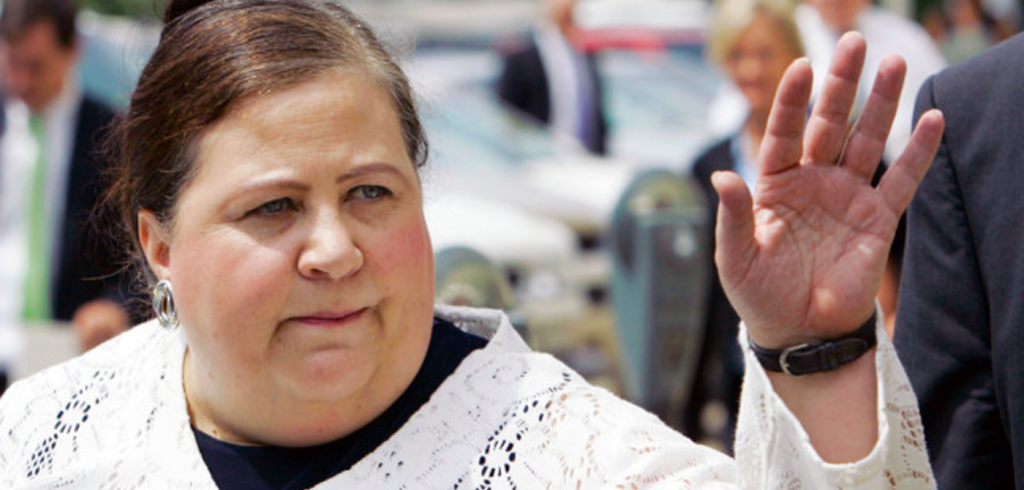
Tuesday night billionaire businessman Donald Trump swept the electoral map in a historic upset that left Democrats across the country shocked and the nation divided. But the Alabama Democratic Party is putting forth an effort to close the divide, offering the newly elected Trump their congratulations and support. “We congratulate the winners and offer our support as they attempt to unify our divided country,” said Nancy Worley, Chair of the Alabama Democratic Party. Worley continued, “we must all unify as a state and nation to guarantee that our children receive a world-class education in well-funded public schools. We must support our working men and women with job training and employment opportunities, higher pay, and affordable health care. We must protect our senior citizens ‘ retirement and Social Security, as we expand their options for long-term independent living.” Trump defeated his Democratic opponent Hillary Clinton — who would have been the country’s first woman President in its 240-year history — and succeeds Democratic Barack Obama, the first African-American President of the U.S. Clinton also congratulated Trump early Wednesday morning, shortly after the race was officially called in his favor. Later in the day, she delivered a somber concession speech where she told her supporters to have an open mind and give the future president a chance. “Last night, I congratulated Donald Trump and offered to work with him on behalf of our country. I hope that he will be a successful president for all Americans,” Clinton said. “Donald Trump is going to be our president. We owe him an open mind and a chance to lead.”

